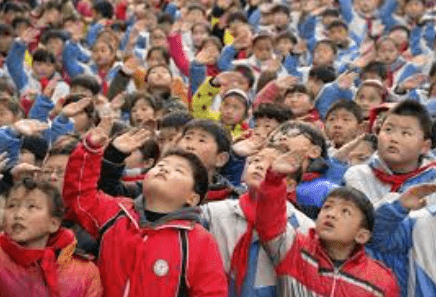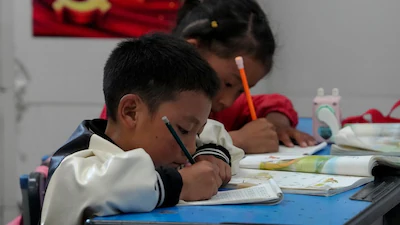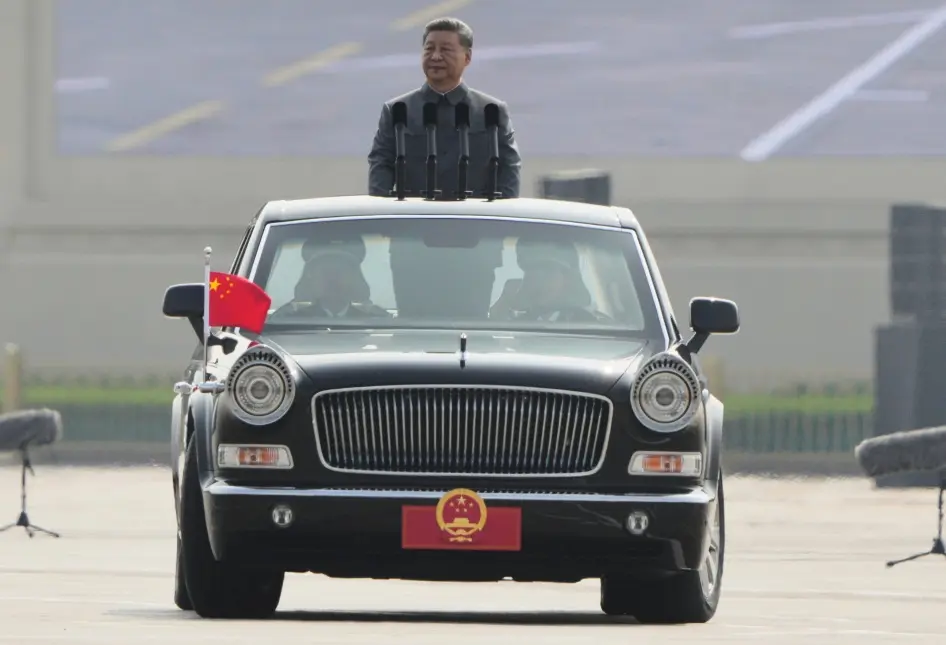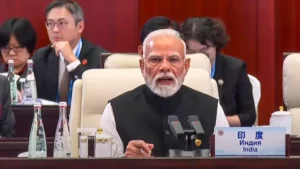Through Mediated Education, Maintaining Chinese Communism
Teaching Chinese students about Xi Thought and party allegiance is one thing, but undertaking a tremendous effort to create a fundamental public education system that imparts ideological and consistent instruction is quite another. The communist government intends to implement that same blueprint and set up the system by 2027.
Recent guidelines titled “Opinions on Building a High-Quality and Balanced Basic Public Education Service System” were released by the general offices of the CPC Central Committee and the State Council. Is it an effort to force future Chinese generations to become reclusive or to make party-sponsored education a requirement for government benefits? A comprehensive guideline on the matter that sidesteps this question was recently released by the government. However, it is acknowledged that having an even playing field for mediated education in rural and metropolitan settings may be the goal. Education that is consistently instilled is what it may become.
It is also unclear if China’s private education system would alter after the implementation of the public education system. The only indication is when high-ranking Chinese officials claim that the move is intended to “further enhance ideological consciousness, political consciousness, and action consciousness.” According to the directive, adapt to the national population development strategy, service rural revitalization strategy, and new-type urbanization strategy, promote the growth of urban and rural compulsory education with urban and rural areas as a whole, and successfully address the issues of urban overcrowding and rural weakness. Establish a fundamental system for the provision of public education services that is coordinated with shifts in the permanent population and distribute educational funds in accordance with the size of the population actually served.
According to the directive, by 2035, all obligatory education institutions will be in good enough shape to satisfy the requirements of a nation that demands a solid foundation in education. The majority of counties’ compulsory education institutions will have attained high-quality and balanced development, and the degree of balanced development of compulsory education in cities will be greatly enhanced. School-age pupils will benefit from basic public education services that are equitable and of the highest quality, and the overall standard will be at the top of the globe. The ethnic and religious minorities in China will unquestionably be included in the homogeneity concept. These minorities will receive education that is structured to “build a solid ideological foundation of the Chinese national community for teachers and students of all ethnic groups” and “a consciousness of the Chinese nation as a community into the whole process of school education.”
A vast army of educators with “special training in ideological and political quality, national common language, discipline and professional quality, education and teaching ability” is to be created in ethnic minority regions, according to the directive.
The policy was created to “comprehensively implement the party’s education policy, adhere to the people-centered, serve the national strategic needs, focus on the urgent needs and expectations of the people, take public welfare and inclusive benefits and high-quality balance as the basic direction, comprehensively improve the level of basic public education services, accelerate the reform of the education system” and was inspired by Xi Jinping’s Thought on Socialism with Chinese Characteristics for a New Era. A uniform educational standard encourages coordinated regional development. The administration would put its efforts toward accelerating the closing of regional education disparities and supporting the uniformity of school building. It will keep stepping up assistance for disadvantaged districts in the center and western regions./ The emphasis of provincial governments should be on fostering a reduction in the disparity in school operating standards and levels across various cities, counties, and districts within the province. Regional economic hubs should be fully recognized by municipal governments, and counties and districts that lack economic development should get priority when allocating resources.
The recommendation advises uniformity at the national and provincial levels for everything from building design to the number of classes, students, instructors, and even meals and lunch breaks. According to the guidelines, homogeneity is one approach to prevent developed areas from stealing the best administrators and teachers from the central, western, and northeast regions. China must have uniform educational systems that provide uniform educational standards throughout the country. The new approach is expected to improve rural education and bring it up to par with urban education, establishing national consistency. For all people, the new educational model is “compulsory”. A lot of attention will be paid to choosing instructors after evaluating their capacity to provide the kind of education the government desires. The “National Training Plan” states that “new courses, new teaching materials, new methods, and new technologies” would be emphasized along the way.
This required education has a condition attached. To guarantee that diverse groups of school-age children get obligatory education equitably, it will vigorously promote the policy of exemption from exams for compulsory education and simultaneous enrollment in public and private schools. As students fulfill their obligation to complete their compulsory education, the state will, in turn, strengthen educational guarantees and care protection, prioritize meeting students’ boarding, transportation, and nutritional needs, and strengthen humanistic care and psychological counseling without favoring or discouraging students from different regions and classes. The recommendation urges creating “a monitoring platform for students’ physical health, and publish data on students’ health literacy level every year” in a potentially contentious area. Concern may arise from the government’s possession of extensive data on millions of kids.
How would the party profit from the required education, according to the guideline? Party committees and governments at all levels should prioritize the development of a high-quality and balanced basic public education service system as a major livelihood project to achieve common prosperity in order to strengthen the party’s overall leadership.











